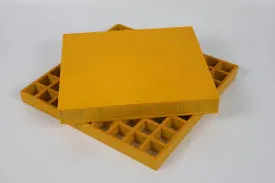
-
 Afrikaans
Afrikaans -
 Albanian
Albanian -
 Amharic
Amharic -
 Arabic
Arabic -
 Armenian
Armenian -
 Azerbaijani
Azerbaijani -
 Basque
Basque -
 Belarusian
Belarusian -
 Bengali
Bengali -
 Bosnian
Bosnian -
 Bulgarian
Bulgarian -
 Catalan
Catalan -
 Cebuano
Cebuano -
 China
China -
 China (Taiwan)
China (Taiwan) -
 Corsican
Corsican -
 Croatian
Croatian -
 Czech
Czech -
 Danish
Danish -
 Dutch
Dutch -
 English
English -
 Esperanto
Esperanto -
 Estonian
Estonian -
 Finnish
Finnish -
 French
French -
 Frisian
Frisian -
 Galician
Galician -
 Georgian
Georgian -
 German
German -
 Greek
Greek -
 Gujarati
Gujarati -
 Haitian Creole
Haitian Creole -
 hausa
hausa -
 hawaiian
hawaiian -
 Hebrew
Hebrew -
 Hindi
Hindi -
 Miao
Miao -
 Hungarian
Hungarian -
 Icelandic
Icelandic -
 igbo
igbo -
 Indonesian
Indonesian -
 irish
irish -
 Italian
Italian -
 Japanese
Japanese -
 Javanese
Javanese -
 Kannada
Kannada -
 kazakh
kazakh -
 Khmer
Khmer -
 Rwandese
Rwandese -
 Korean
Korean -
 Kurdish
Kurdish -
 Kyrgyz
Kyrgyz -
 Lao
Lao -
 Latin
Latin -
 Latvian
Latvian -
 Lithuanian
Lithuanian -
 Luxembourgish
Luxembourgish -
 Macedonian
Macedonian -
 Malgashi
Malgashi -
 Malay
Malay -
 Malayalam
Malayalam -
 Maltese
Maltese -
 Maori
Maori -
 Marathi
Marathi -
 Mongolian
Mongolian -
 Myanmar
Myanmar -
 Nepali
Nepali -
 Norwegian
Norwegian -
 Norwegian
Norwegian -
 Occitan
Occitan -
 Pashto
Pashto -
 Persian
Persian -
 Polish
Polish -
 Portuguese
Portuguese -
 Punjabi
Punjabi -
 Romanian
Romanian -
 Russian
Russian -
 Samoan
Samoan -
 Scottish Gaelic
Scottish Gaelic -
 Serbian
Serbian -
 Sesotho
Sesotho -
 Shona
Shona -
 Sindhi
Sindhi -
 Sinhala
Sinhala -
 Slovak
Slovak -
 Slovenian
Slovenian -
 Somali
Somali -
 Spanish
Spanish -
 Sundanese
Sundanese -
 Swahili
Swahili -
 Swedish
Swedish -
 Tagalog
Tagalog -
 Tajik
Tajik -
 Tamil
Tamil -
 Tatar
Tatar -
 Telugu
Telugu -
 Thai
Thai -
 Turkish
Turkish -
 Turkmen
Turkmen -
 Ukrainian
Ukrainian -
 Urdu
Urdu -
 Uighur
Uighur -
 Uzbek
Uzbek -
 Vietnamese
Vietnamese -
 Welsh
Welsh -
 Bantu
Bantu -
 Yiddish
Yiddish -
 Yoruba
Yoruba -
 Zulu
Zulu
GRP Dual Lamination Solutions for Improved Durability and Longevity in Products
Enhancing Durability The Role of GRP Dual Lamination Products
In the ever-evolving landscape of materials science and engineering, the pursuit of enhanced durability and performance characteristics has led to the development of innovative solutions, especially in the field of composite materials. One such advancement is the utilization of Glass Reinforced Plastic (GRP) dual lamination products. These materials not only exhibit superior strength and longevity but also offer a range of applications across various industries, including construction, automotive, and aerospace.
Understanding GRP and Dual Lamination
Glass Reinforced Plastic, commonly referred to as fiberglass, is a composite material made from a polymer matrix reinforced with glass fibers. This combination results in a strong yet lightweight material that possesses excellent resistance to environmental factors such as corrosion, UV radiation, and chemical exposure. The dual lamination process enhances the inherent properties of GRP by applying multiple layers of control during the lamination process.
In dual lamination, two layers of the laminate are created, each optimized for specific performance traits. The first layer often focuses on structural integrity and strength, while the second layer can be tailored to enhance surface durability, resistance to wear, or aesthetic qualities. This method provides a synergistic effect that greatly improves the overall functionality of the composite material.
Applications of GRP Dual Lamination Products
GRP dual lamination products are increasingly employed in a multitude of sectors. In the construction industry, they are used for roofing, cladding, and structural components where weather resistance and longevity are critical. These materials can withstand harsh environmental conditions, reducing the need for frequent repairs and maintenance, ultimately leading to cost savings over time.
The automotive industry also benefits significantly from GRP dual lamination. Components such as body panels, structural elements, and interior fittings made from these materials are lighter and more durable than traditional metals or plastics. This weight reduction translates directly to improved fuel efficiency and performance of vehicles, which is increasingly crucial in today’s environmentally conscious market.
grp dual lamination products for enhanced durability and ...

In aerospace applications, the properties of GRP dual lamination enable the design of lightweight yet durable components, which are essential for enhancing fuel efficiency and overall performance
. The ability to withstand extreme operating conditions without degradation makes GRP an ideal choice for various aerospace applications, including fuselage components and wing structures.Advantages of GRP Dual Lamination
The advantages of GRP dual lamination products are manifold. Firstly, they offer exceptional resistance to moisture and chemical exposure, minimizing issues related to corrosion that often plague traditional materials. This durability extends the lifecycle of products, which is especially important in industries where equipment failure can lead to significant operational disruptions.
Secondly, dual lamination allows for customizable properties. Manufacturers can fine-tune the performance characteristics of each layer to meet specific demands, making it possible to create products that are not only strong but also tailored to the intended application. This versatility enhances the usability of GRP in specialized sectors where standard materials may fall short.
Moreover, the aesthetic appeal of GRP dual lamination products cannot be overlooked. The surface finish can be designed to meet various aesthetic requirements, providing an attractive solution that does not compromise on performance. This is particularly advantageous in applications where both functionality and appearance are critical.
Conclusion
GRP dual lamination products represent a significant advancement in materials technology, offering enhanced durability and versatility across a wide range of applications. The combination of glass fibers and polymer matrices, along with the benefits of dual lamination, provides engineers and manufacturers with a powerful tool to meet the ever-increasing demands for performance, longevity, and efficiency. As industries continue to seek innovative solutions to both environmental and operational challenges, the role of GRP dual lamination products is set to become even more prominent, paving the way for a new era of advanced composite materials.









